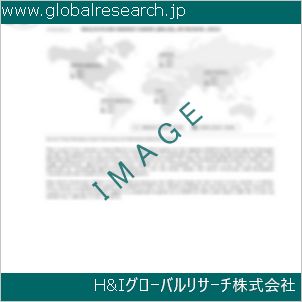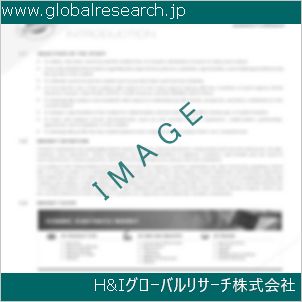Table of Contents
1 Industry Overview of Leadsulfide
1.1 Definition and Specifications of Leadsulfide
1.1.1 Definition of Leadsulfide
1.1.2 Specifications of Leadsulfide
1.2 Classification of Leadsulfide
1.3 Applications of Leadsulfide
1.3.1 Nuclear Application
1.3.2 Non-Nuclear Application
1.4 Industry Chain Structure of Leadsulfide
1.5 Industry Overview and Major Regions Status of Leadsulfide
1.5.1 Industry Overview of Leadsulfide
1.5.2 Global Major Regions Status of Leadsulfide
1.6 Industry Policy Analysis of Leadsulfide
1.7 Industry News Analysis of Leadsulfide
2 Manufacturing Cost Structure Analysis of Leadsulfide
2.1 Raw Material Suppliers and Price Analysis of Leadsulfide
2.2 Equipment Suppliers and Price Analysis of Leadsulfide
2.3 Labor Cost Analysis of Leadsulfide
2.4 Other Costs Analysis of Leadsulfide
2.5 Manufacturing Cost Structure Analysis of Leadsulfide
2.6 Manufacturing Process Analysis of Leadsulfide
3 Technical Data and Manufacturing Plants Analysis of Leadsulfide
3.1 Capacity and Commercial Production Date of Global Leadsulfide Major Manufacturers in 2023
3.2 Manufacturing Plants Distribution of Global Leadsulfide Major Manufacturers in 2023
3.3 R&D Status and Technology Source of Global Leadsulfide Major Manufacturers in 2023
3.4 Raw Materials Sources Analysis of Global Leadsulfide Major Manufacturers in 2023
4 Capacity, Production and Revenue Analysis of Leadsulfide by Regions, Types and Manufacturers
4.1 Global Capacity, Production and Revenue of Leadsulfide by Regions 2019-2024
4.2 Global and Major Regions Capacity, Production, Revenue and Growth Rate of Leadsulfide 2019-2024
4.3 Global Capacity, Production and Revenue of Leadsulfide by Types 2019-2024
4.4 Global Capacity, Production and Revenue of Leadsulfide by Manufacturers 2019-2024
5 Price, Cost, Gross and Gross Margin Analysis of Leadsulfide by Regions, Types and Manufacturers
5.1 Price, Cost, Gross and Gross Margin Analysis of Leadsulfide by Regions 2019-2024
5.2 Price, Cost, Gross and Gross Margin Analysis of Leadsulfide by Types 2019-2024
5.3 Price, Cost, Gross and Gross Margin Analysis of Leadsulfide by Manufacturers 2019-2024
6 Consumption Volume, Consumption Value and Sale Price Analysis of Leadsulfide by Regions, Types and Applications
6.1 Global Consumption Volume and Consumption Value of Leadsulfide by Regions 2019-2024
6.2 Global and Major Regions Consumption Volume, Consumption Value and Growth Rate of Leadsulfide 2019-2024
6.3 Global Consumption Volume and Consumption Value of Leadsulfide by Types 2019-2024
6.4 Global Consumption Volume and Consumption Value of Leadsulfide by Applications 2019-2024
6.5 Sale Price of Leadsulfide by Regions 2019-2024
6.6 Sale Price of Leadsulfide by Types 2019-2024
6.7 Sale Price of Leadsulfide by Applications 2019-2024
6.8 Market Share Analysis of Leadsulfide by Different Sale Price Levels
7 Supply, Import, Export and Consumption Analysis of Leadsulfide
7.1 Supply, Consumption and Gap of Leadsulfide 2019-2024
7.2 Global Capacity, Production, Price, Cost, Revenue, Supply, Import, Export and Consumption of Leadsulfide 2019-2024
7.3 USA Capacity, Production, Price, Cost, Revenue, Supply, Import, Export and Consumption of Leadsulfide 2019-2024
7.4 EU Capacity, Production, Price, Cost, Revenue, Supply, Import, Export and Consumption of Leadsulfide 2019-2024
7.5 China Capacity, Production, Price, Cost, Revenue, Supply, Import, Export and Consumption of Leadsulfide 2019-2024
7.6 Japan Capacity, Production, Price, Cost, Revenue, Supply, Import, Export and Consumption of Leadsulfide 2019-2024
8 Major Manufacturers Analysis of Leadsulfide
8.1 Manufacturer One
8.1.1 Company Profile
8.1.2 Product Picture and Specifications
8.1.2.1 Type I
8.1.2.2 Type II
8.1.2.3 Type III
8.1.3 Capacity, Production, Price, Cost, Gross and Revenue
8.1.4 Contact Information
8.2 Manufacturer Two
8.2.1 Company Profile
8.2.2 Product Picture and Specifications
8.2.2.1 Type I
8.2.2.2 Type II
8.2.2.3 Type III
8.2.3 Capacity, Production, Price, Cost, Gross and Revenue
8.2.4 Contact Information
8.3 Manufacturer Three
8.3.1 Company Profile
8.3.2 Product Picture and Specifications
8.3.2.1 Type I
8.3.2.2 Type II
8.3.2.3 Type III
8.3.3 Capacity, Production, Price, Cost, Gross and Revenue
8.3.4 Contact Information
8.4 Manufacturer Four
8.4.1 Company Profile
8.4.2 Product Picture and Specifications
8.4.2.1 Type I
8.4.2.2 Type II
8.4.2.3 Type III
8.4.3 Capacity, Production, Price, Cost, Gross and Revenue
8.4.4 Contact Information
8.5 Manufacturer Five
8.5.1 Company Profile
8.5.2 Product Picture and Specifications
8.5.2.1 Type I
8.5.2.2 Type II
8.5.2.3 Type III
8.5.3 Capacity, Production, Price, Cost, Gross and Revenue
8.5.4 Contact Information
…
9 Marketing Trader or Distributor Analysis of Leadsulfide
9.1 Marketing Channels Status of Leadsulfide
9.2 Traders or Distributors with Contact Information of Leadsulfide by Regions
9.3 Ex-work Price, Channel Price and End Buyer Price Analysis of Leadsulfide
9.4 Regional Import, Export and Trade Analysis of Leadsulfide
10 Industry Chain Analysis of Leadsulfide
10.1 Upstream Major Raw Materials Suppliers Analysis of Leadsulfide
10.1.1 Major Raw Materials Suppliers with Contact Information Analysis of Leadsulfide
10.1.2 Major Raw Materials Suppliers with Supply Volume Analysis of Leadsulfide by Regions
10.2 Upstream Major Equipment Suppliers Analysis of Leadsulfide
10.2.1 Major Equipment Suppliers with Contact Information Analysis of Leadsulfide
10.2.2 Major Equipment Suppliers with Product Pictures Analysis of Leadsulfide by Regions
10.3 Downstream Major Consumers Analysis of Leadsulfide
10.3.1 Major Consumers with Contact Information Analysis of Leadsulfide
10.3.2 Major Consumers with Consumption Volume Analysis of Leadsulfide by Regions
10.4 Supply Chain Relationship Analysis of Leadsulfide
11 Development Trend of Analysis of Leadsulfide
11.1 Capacity, Production and Revenue Forecast of Leadsulfide by Regions and Types
11.1.1 Global Capacity, Production and Revenue of Leadsulfide by Regions 2024-2029
11.1.2 Global and Major Regions Capacity, Production, Revenue and Growth Rate of Leadsulfide 2024-2029
11.1.3 Global Capacity, Production and Revenue of Leadsulfide by Types 2024-2029
11.2 Consumption Volume and Consumption Value Forecast of Leadsulfide by Regions, Types and Applications
11.2.1 Global Consumption Volume and Consumption Value of Leadsulfide by Regions 2024-2029
11.2.2 Global and Major Regions Consumption Volume, Consumption Value and Growth Rate of Leadsulfide 2024-2029
11.2.3 Global Consumption Volume and Consumption Value of Leadsulfide by Types 2024-2029
11.2.4 Global Consumption Volume and Consumption Value of Leadsulfide by Applications 2024-2029
11.3 Supply, Import, Export and Consumption Forecast of Leadsulfide
11.3.1 Supply, Consumption and Gap of Leadsulfide 2024-2029
11.3.2 Global Capacity, Production, Price, Cost, Revenue, Supply, Import, Export and Consumption of Leadsulfide 2024-2029
11.3.3 USA Capacity, Production, Price, Cost, Revenue, Supply, Import, Export and Consumption of Leadsulfide 2024-2029
11.3.4 EU Capacity, Production, Price, Cost, Revenue, Supply, Import, Export and Consumption of Leadsulfide 2024-2029
11.3.5 China Capacity, Production, Price, Cost, Revenue, Supply, Import, Export and Consumption of Leadsulfide 2024-2029
11.3.6 Japan Capacity, Production, Price, Cost, Revenue, Supply, Import, Export and Consumption of Leadsulfide 2024-2029
12 New Project Investment Feasibility Analysis of Leadsulfide
12.1 New Project SWOT Analysis of Leadsulfide
12.2 New Project Investment Feasibility Analysis of Leadsulfide
13 Conclusion of the Global Leadsulfide (CAS 1314-87-0) Industry 2024 Market Research Report
| ※参考情報 硫化鉛(Lead sulfide、CAS番号1314-87-0)は、鉛と硫黄から成る無機化合物で、その化学式はPbSです。硫化鉛は自然界において重要な鉱石であるガレナ(鉛鉱)としても存在し、鉛を抽出するための主要な原料の一つとして知られています。ここでは、硫化鉛の定義や特徴、種類、用途、関連技術について詳しく述べます。 硫化鉛の基本的な定義としては、鉛と硫黄の原子が1対1の割合で結合した化合物であることが挙げられます。この化合物は、黒色または茶色の固体として存在し、他の鉱物との相互作用により色合いが異なる場合もあります。硫化鉛は結晶構造を持ち、特にの立方体構造が一般的です。この構造は、鉛原子が硫黄原子と交互に配列することにより形成され、物理的な特性に影響を与えます。 硫化鉛の特徴としては、まずその導電性が挙げられます。通常、硫化鉛は半導体として振る舞い、温度や不純物の添加によってその電気的性質は大きく変化します。また、硫化鉛は熱的および化学的に安定しており、酸に対して比較的耐性がありますが、強い酸化剤には反応しやすい性質があります。さらに、光学的な特性も注目されており、特に赤外線領域での吸収特性が研究されています。 硫化鉛にはいくつかの種類があります。これには、縮合硫化鉛と、より高い温度や圧力で形成された多結晶の硫化鉛が含まれます。また、ナノ異物技術の発展により、ナノサイズの硫化鉛粒子も注目を浴びています。ナノ粒子は、通常の粒子よりも表面積が大きく、独自の物理的および化学的性質を示すため、特定の応用において非常に有用です。 用途としては、硫化鉛は主に電子デバイスや光デバイスに利用されています。特に、赤外線検出器や熱電素子においてその導電性が活かされ、温度変化に応じた電気信号を生成する能力が求められます。また、太陽電池やその他のエネルギー変換デバイスにおける材料としても研究されています。硫化鉛は、光を吸収し電気エネルギーに変換する過程において重要な役割を果たします。 加えて、硫化鉛は鉛鉱石からの鉛の抽出にも利用されます。この過程では、硫化鉛を高温で他の化合物と反応させ、鉛を取り出すことができます。このようにして得られた鉛は、バッテリー、電子機器、建築材料など、様々な産業で使用されています。 関連技術としては、ナノ技術の進展や半導体技術の発展が挙げられます。特にナノ技術においては、ナノ硫化鉛は新しい種類の光電子デバイスやセンサーに活用されています。これにより、従来の技術に比べてより高性能なデバイスが実現されます。また、環境に優しい鉛の回収や再利用の手法も開発が進んでおり、持続可能な資源利用が模索されています。 硫化鉛は、その物質特性や多様な応用により、材料科学、環境科学、エネルギー技術など幅広い分野で注目されています。今後の研究や技術革新により、より効果的な利用法が見出されることが期待されており、持続可能な社会の構築にも寄与する可能性があります。 |
❖ 免責事項 ❖
http://www.globalresearch.jp/disclaimer












